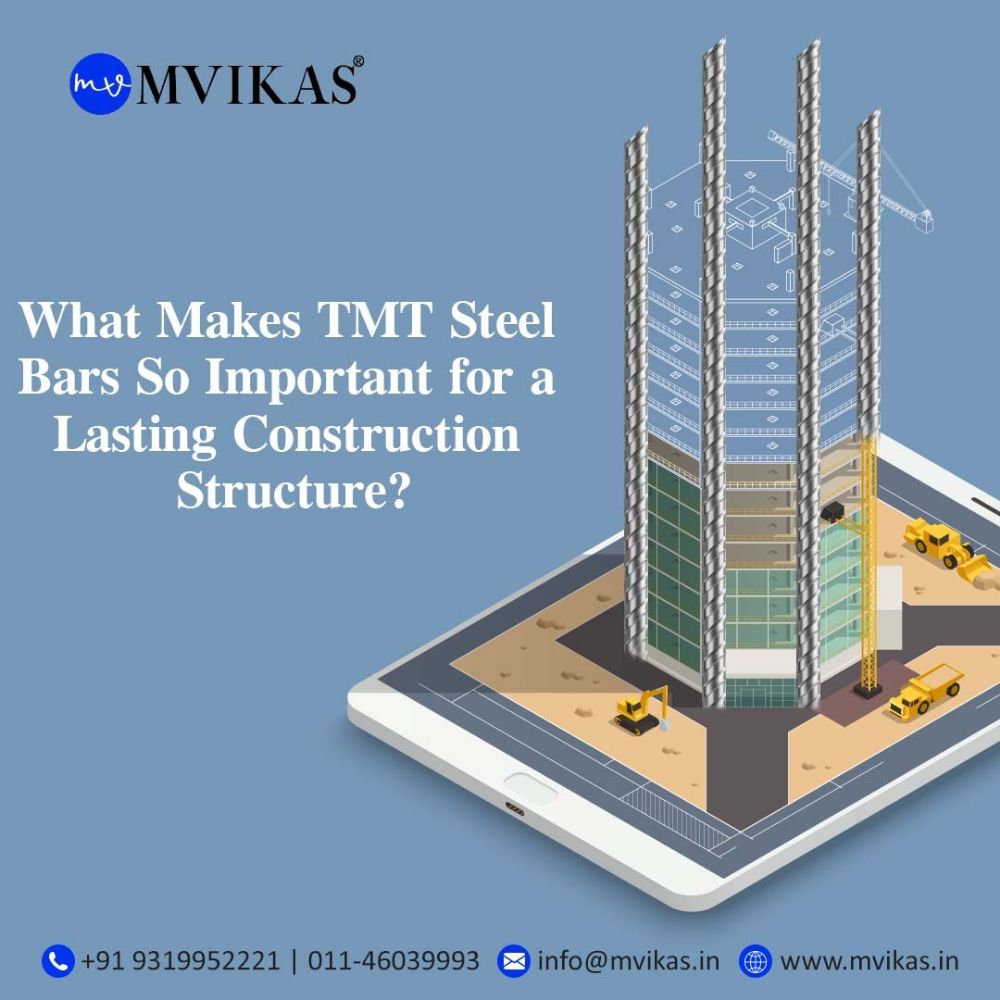Reachable at 9560662883  011-46039993 (Ext. 21 to 32) (10am - 06pm)
011-46039993 (Ext. 21 to 32) (10am - 06pm)
What Makes TMT Steel Bars So Important for a Lasting Construction Structure?

Concrete was formerly the chosen building material, but it had flaws: it was exceedingly delicate to tension while being quite strong in compression, creating an imbalance that the builder had to handle. Thanks to technical breakthroughs, TMT steel for a building is a benefit in today's world. TMT bars have more elasticity and flexibility than steel rods because of their soft inner ferrite-pearlite core.
TMT rods become earthquake-resistant due to increased buckling and bending, increasing the structural stability of your structure during natural catastrophes. TMT steel for construction, because of its high elongation property, not only gives tremendous tensile strength and support to a building structure, but it is also incredibly durable and seismic earthquake resistant.
Why should you use TMT Bars?
Because of its particular qualities, the usage of TMT steel bars in construction has expanded in recent years. TMT steel bars are produced utilising TEMPCORE technology, which provides the bar with a solid marcasite steel outer core and a soft inner core, resulting in solid and ductile bars. TMT bar ribbing strengthens the connection between the steel bar and the concrete. TMT bars' high flexibility prevents the structure from damage during natural catastrophes like earthquakes.
This connection is critical to the structure's stability because the TMT steel bar securely attaches to the concrete, reducing the possibility of cracking. A multi-layer cooling phase is required to produce a TMT steel bar, resulting in a deformable ferrite-pearlite inner core. And give it the unique ability to be employed in any building. As a result, TMT bars are chosen to construct buildings and other structures in seismically active locations.
TMT steel bars are available in a variety of grades to meet a variety of structural needs. In India, the accessible grades are Fe 415, Fe 500, and Fe 550. TMT bars come in various diameters ranging from 6 to 32 mm.
What is the usage of TMT Steel for Construction?
Because of its adaptability, TMT Bar is the sole solution in the building industry.
- Ductility
- The yield of Tensile Strength Power
- Resistance to Heat
- Resistance to Corrosion
- Steel rods are used in construction to give strength and durability.
It is vital to choose a TMT Bar Manufacturer who guarantees the quality of the TMT Bar. They are made of pure iron ore; TMT bars manufactured at the Integrated Steel Plant (ISP) are of the finest quality. Thermo mechanical Treatment (TMT) is a method in which the best quality steel bars are chilled utilising "Thermex" water jet technology, resulting in a hard outer surface and a soft inner core.
TMT (Thermo Mechanically Treated) Bars are solid, pliable, fatigue-resistant, earthquake-resistant, and corrosion-resistant.
Advantages of TMT Steel for Construction
TMT steel bars are ideal for home building because of their high tensile-to-yield strength, flexibility, weldability, lightweight, corrosion and fire resistance, and other properties.
The following are the advantages of TMT Steel for Construction.
- Increased elasticity and strength
Because of their exceptional strength, the bars are ideal for use with concrete to reinforce buildings. The ribbed design of the TMT bars improves strength by strengthening the relationship between them and the concrete. Because of their elasticity, TMT bars are simpler to work with, and pre-welded meshes may be created off-site, reducing total construction time.
- Reduced steel use
TMT steel rods are incredibly robust and resistant to damage but exhibit extraordinary strain resistance over time. TMT rods have significantly greater load-bearing capacities than other steel rods, allowing them to be utilised far more inexpensively. Steel is utilised because it adheres well to concrete, has a similar thermal expansion coefficient, and is both robust and reasonably priced. Reinforced concrete, today the world's top building material, is also utilised to produce deep foundations and basements.
- Cost Effective
TMT bars with a lower cost have greater tensile strength and elongation value, which means you need less steel for the same amount of building. And requiring less quantity of steel saves money on shipping and storage and lowers the cost of raw materials. TMT steel bars are also easier to control on-site, resulting in further cost savings due to decreased construction and fabrication time.
- Corrosion-resistant
Corrosion resistance is defined as the capacity to prevent corrosion of the substrate. In this instance, open porosity and fractures in the coating microstructure may be more relevant than the coating composition. The TMT production process provides the anti-rust properties of the bars. Coarse carbides, the primary cause of corrosion in steel, are prevented from forming during the water-cooling step, making TMT steel constructions more durable.
- Earthquake-resistant
The soft core of TMT bars provides a high degree of flexibility, allowing TMT constructions to withstand dynamic and seismic loads more efficiently. TMT bars are less expensive because they have greater tensile strength and elongation value, meaning less steel is required to produce the same structure; it saves transportation and storage while cutting raw material costs. TMT steel bars are also simpler to manage on-site, which saves money by allowing for speedier construction and manufacture.




Leave your comment